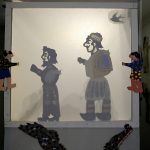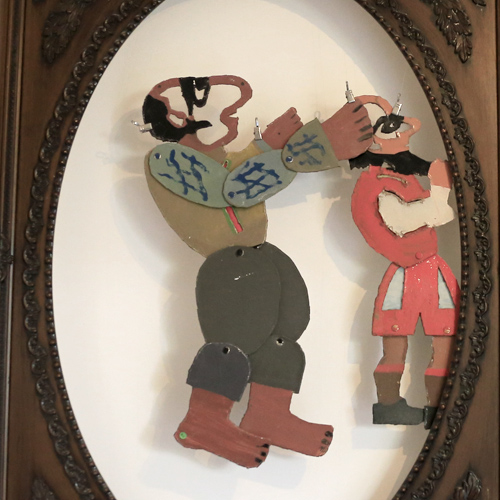Overview
Traditional shadow theatre has long been a favourite form of entertainment in Greek and Cypriot cultures with fictional character, Karagiozis, being the principle puppet to star in the plays. Hidden behind a spotlit curtain, a single puppeteer creates voices, dialogue and sometimes even song, crafting a story with the shadow of the characters.
Always designed in profile, the puppet characters get into mischief and humorous situations with Karagiozis being the protagonist. In traditional stories, Karagiozis is a poor hunchbacked Greek with an elongated right arm, rugged clothes and bare feet. His only concerns is how to find food and money and so involves himself in mischief, though puppeteers today craft original scenarios.
A big part of Greek and Cypriot culture, in the 1980s Greek television had Karagiozi shows weekly. Today it is a more quiet artform yet hugely traditional. In modern daily speech, the word Karagiozis is used to describe someone as a clown, leaving puppeteers to defend the warm-hearted nature of the character.
Enter the funny world of this historic art at the Pafios Shadow Theatre Museum-Workshop that offers an excellent cultural and educational experience for the entire family.
Get in touch with shadow theatre at the Pafios museum with their exhibits of figures, theatrical objects and family artefacts from the popular Pafios family of Karagiozi players: Christodoulos Pafios (1904-1987), his son Achilleas Pafios (1928-1987) and grandson Christos A. Pafios. These personal and historical items all highlight the importance of folk art and the tradition of the Cyprus Shadow Theatre Karagiozis.
The small museum offers guided tours that introduce you to the traditional characters of the Shadow Theatre. During your visit, you can visit the workshop to learn how to make the figures and even becοme a ‘Karagiozi player’ with stage and acting lessons. Moreover, the Pafios Museum organizes Karagiozi theatrical productions in schools, festivals and cultural events throughout Cyprus.
The museum operates all year round, expect on public holidays, for a free entrance with a suggested donation of €2.00. Opening and closing times are subject to alterations so it is advised to check before visiting.
Gallery
 Displays of various puppets created at the museum | Photo by Eleni Philippou
Displays of various puppets created at the museum | Photo by Eleni Philippou






